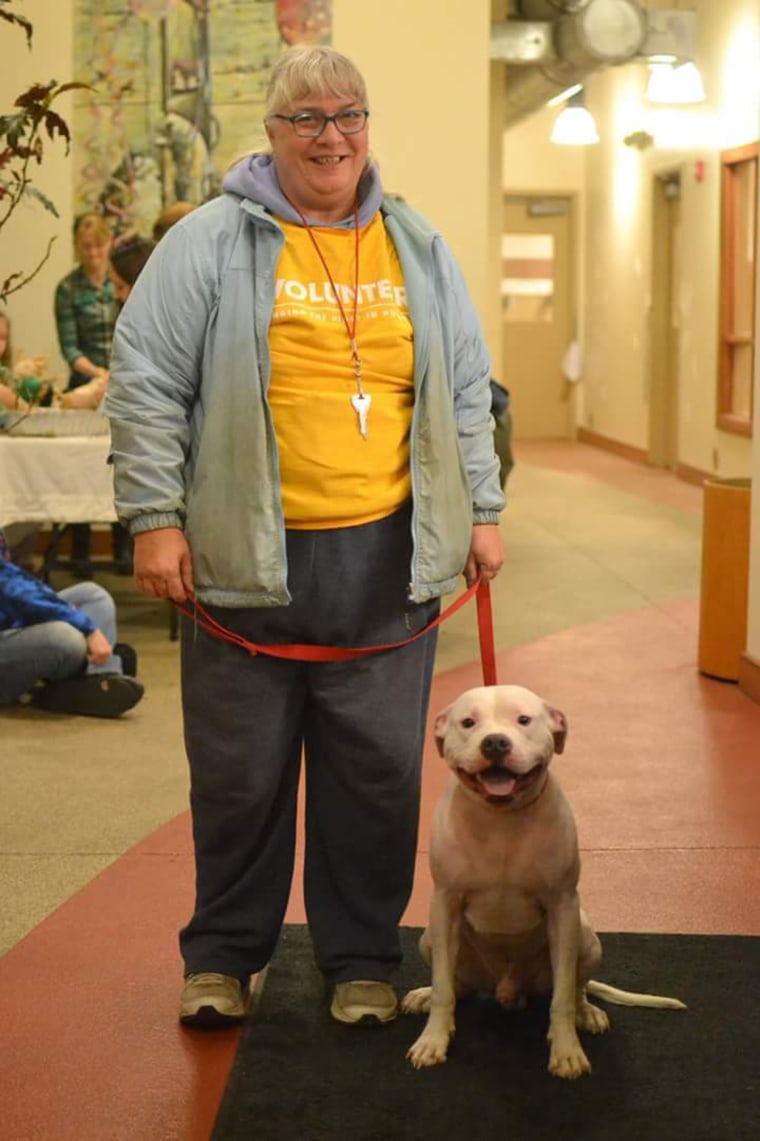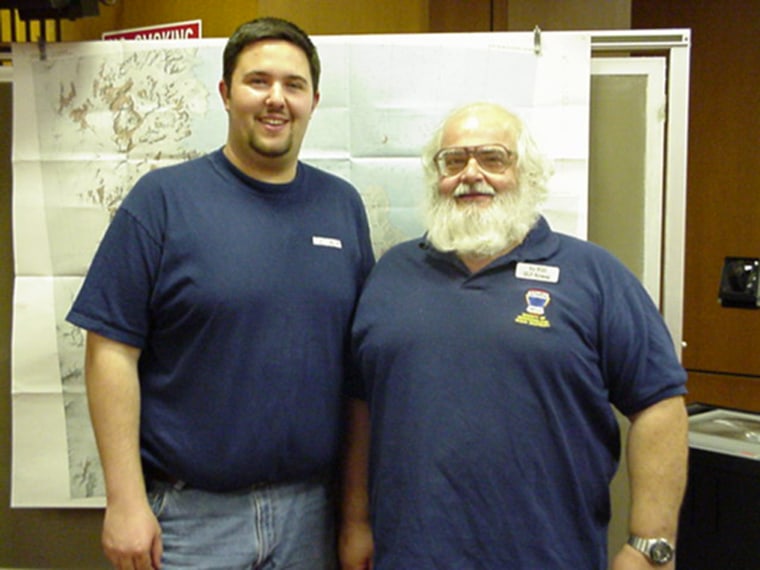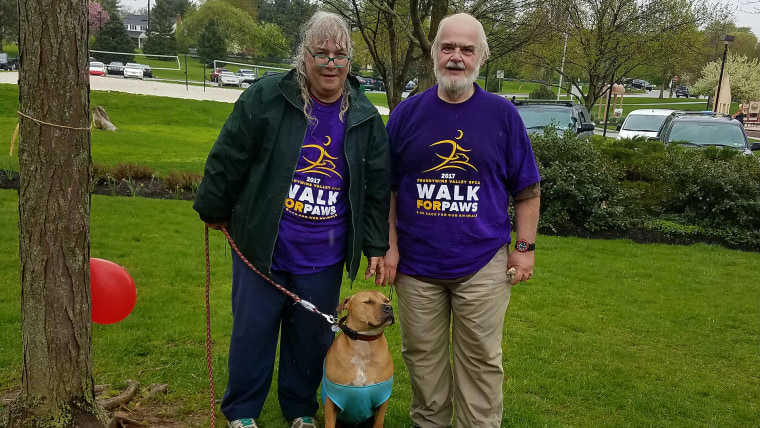When Anne and Vic Tenaglia first began fostering a pit bull terrier, Jingle, he struggled with anxiety. The dog was recently rescued from a fighting ring and coped with stress by gnawing his tail.
As they tried finding ways to soothe Jingle, the couple realized frequent, long walks helped. While the 3-mile treks transformed Jingle’s personality, the daily exercise also improved the Tenaglias’ health and the pair lost 80 pounds combined.
“We saved his life, but we like to say he saved ours,” Anne Tenaglia, 65, of West Chester, Pennsylvania, told TODAY. “My muscles are more developed, and I am not having to take as much pain medication and stuff like that. It helped with my weight and helped with my heart.”

Two years ago, the Brandywine Valley SPCA asked the Tenaglias to foster Jingle as an emergency placement. The shelter had rescued the then 2-year-old dog and 11 others from a fighting ring. But the shelter environment overwhelmed Jingle. He was underweight, covered in wounds and biting off his tail. The couple felt hesitant to foster a pit bull terrier, but Anne also worried about the distressed pup.
“I couldn’t leave him there,” she said.
While the dog immediately warmed up to them, he still ate his tail obsessively. To distract him, the couple started walking him — a lot.
“The only thing that would calm him down was walking. We walked him four or five or six times a day,” she said.
While walking helped Jingle, it also had a big result on Anne and Vic's health. Anne lost 20 pounds and her husband, Vic, 66, shed 60 pounds. Now they both weigh 250 pounds.

But the impact it has had on Anne’s heart has even impressed her doctor. She has high blood pressure and atrial fibrillation, an irregular heartbeat that can cause clots, stroke or heart failure. A few times a year, she would experience heart palpitations, which sent her to the hospital. Since fostering Jingle, she hasn’t had any hospital admissions.
“The EKGs (electrocardiograms) have been fine,” she said. “Our cardiologist said, ‘Whatever you are doing, keep doing it.’”

Today, the Tenaglias are more active and enjoy chasing after their grandchildren. Anne even walked in two 5K races with Jingle, something she never thought she would be fit enough to do.
“That was good for me. It was a confidence builder,” she said.
After a year of fostering Jingle, the couple wanted him to be a permanent part of their family.
“We were thrilled to death,” she said. “He actually chose us before we realized he had wormed his way into our hearts.”

Anne shared her story during the Petco Foundation’s Holiday Wishes campaign and won a $5,000 grant for the Brandywine SPCA, which the shelter can use to help other dogs like Jingle.
She feels surprised Jingle transformed her health and urges others to consider dog walking as a way to become more active. Most shelters allow volunteers to walk the dogs if fostering or adoption isn’t realistic.
“It is like a service and you get a good feeling for helping and the dog enjoys it and the shelter benefits, too,” she said.